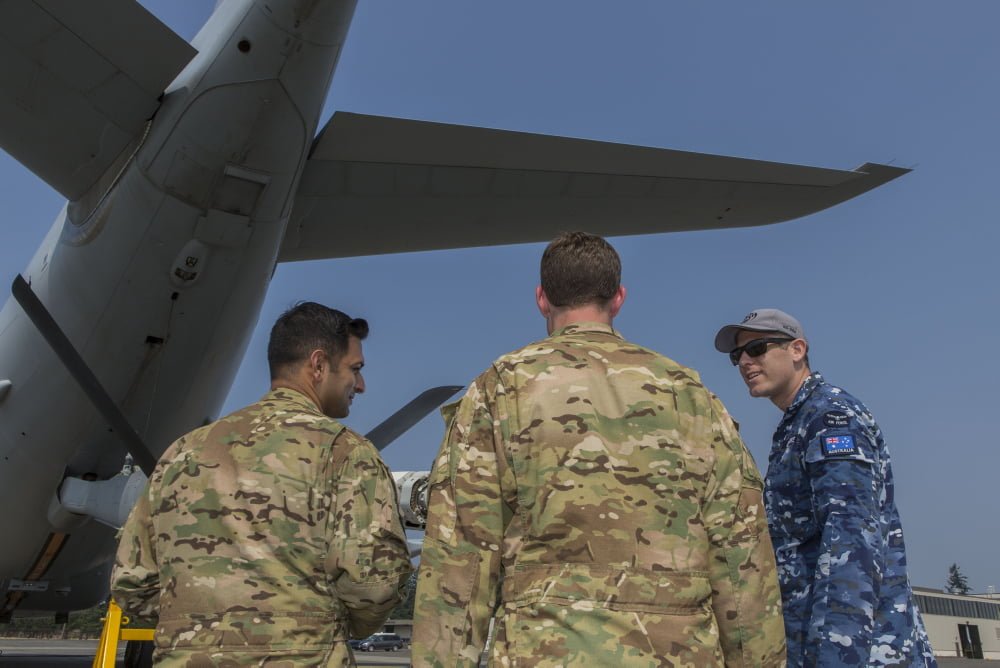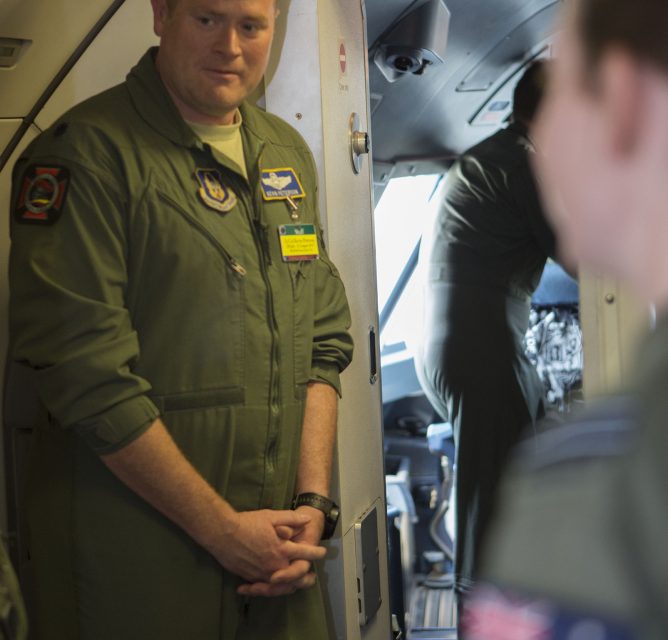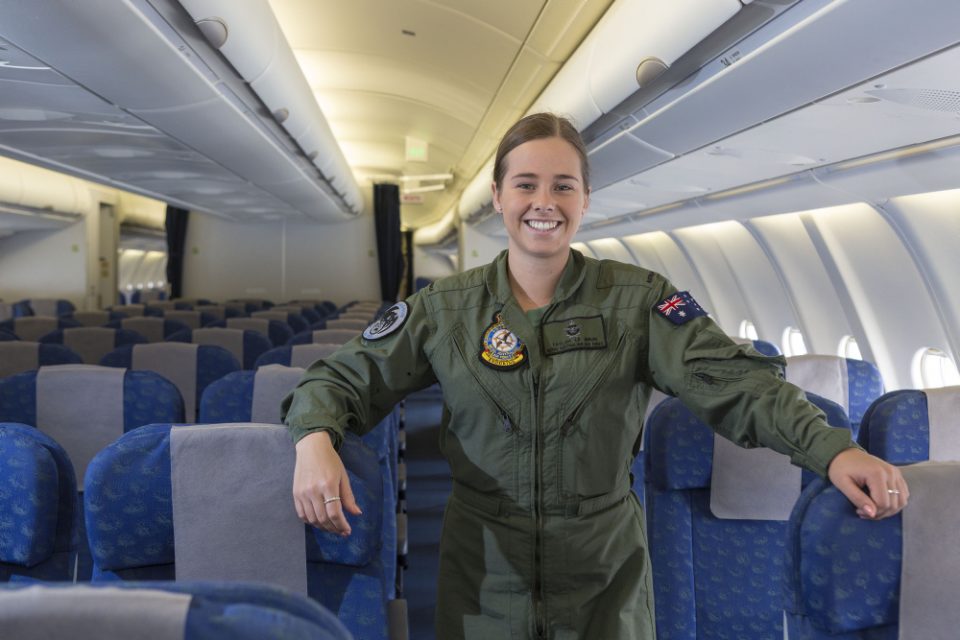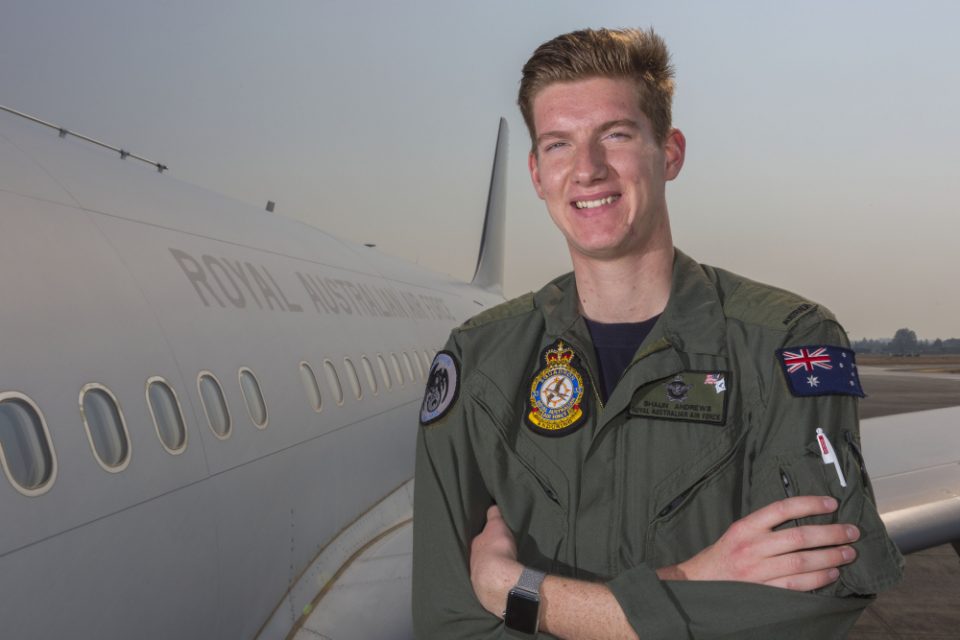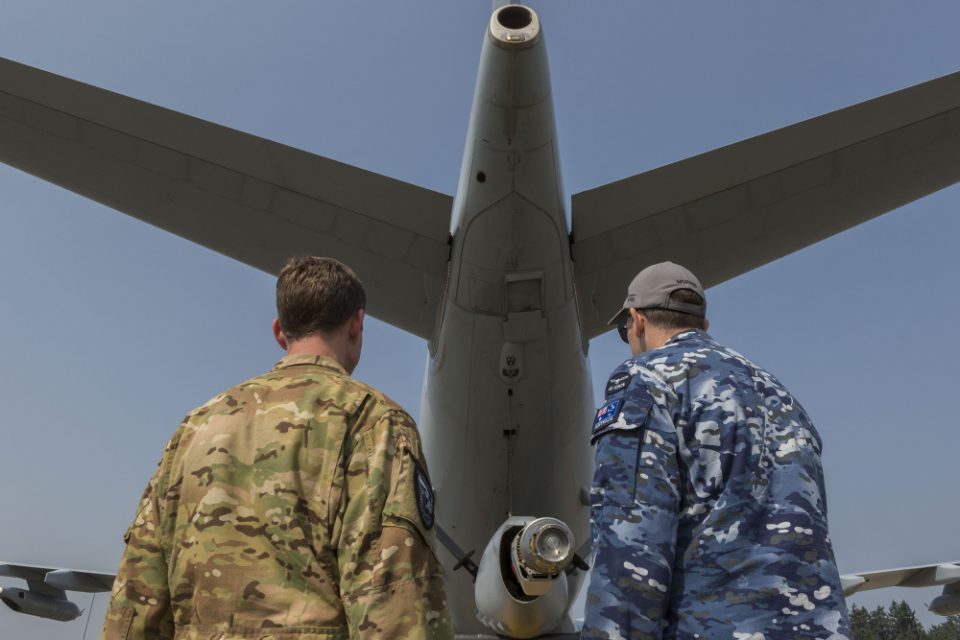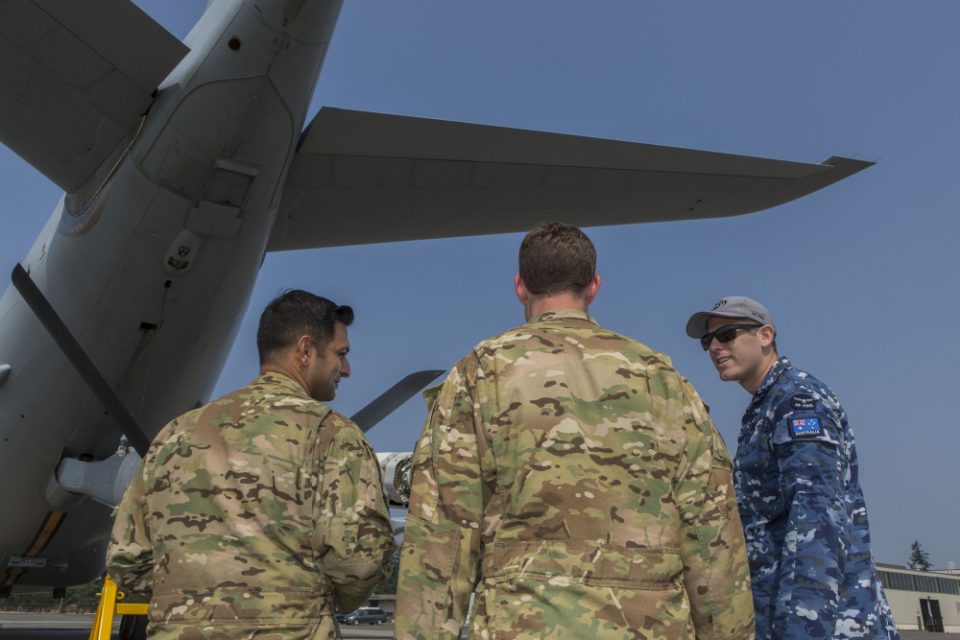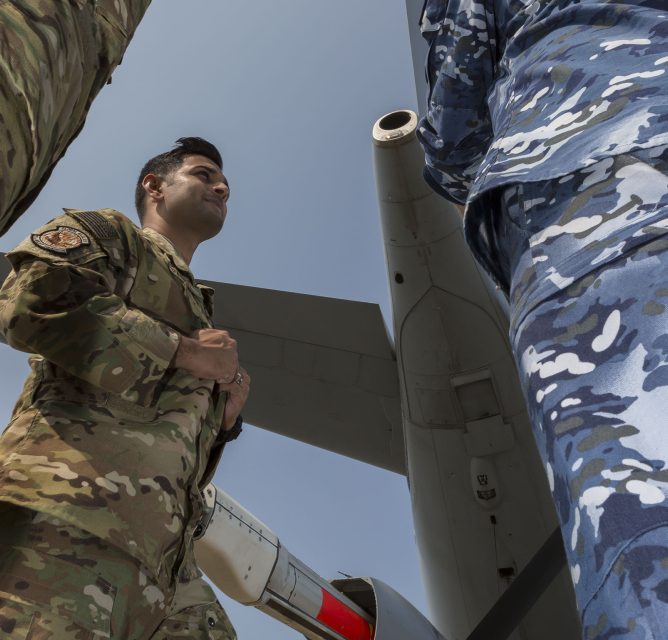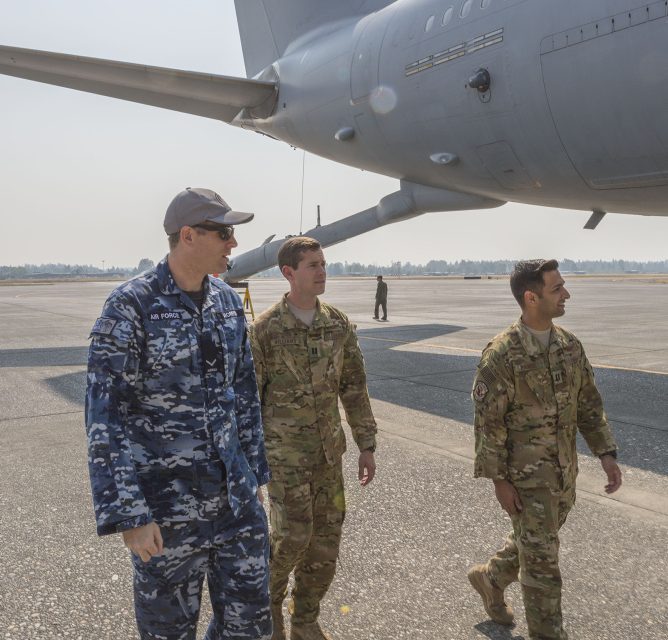2017-08-25 By Robbin Laird
Last year I had a chance to talk with the Commander of the Surveillance Response Group Air Commodore Craig Heap about the way ahead for this unique and key part of the RAAF.
In our discussion, he argued that the aperture needed to be opened on what SRG is doing, including continuing the evolution of the SRG contribution to the ADF and coalition partners.
“When we talk traditionally about the SRG mission, we talk about surveillance, battle space management and maritime warfighting.
That is now too limited given the potential of the capabilities we have, and are acquiring.
We need to broaden the mission into wider intelligence, surveillance, reconnaissance, control of the air, battlespace control and strike roles, across multiple domains, which is where we are evolving, along with the parallel evolution of the RAAF and the ADF.
The mission statement needed to focus not only on classical air battlespace management, but control of the battlespace.”
This time we had a chance to talk about the latest Talisman Sabre exercise and the SRG role within that exercise.
“Talisman Sabre 2017 was a combined United States and Australian exercise comprising a command post exercise and a field training exercise.
“The field training exercise – the live part — was conducted off the east coast of Australia and in Northern Australia.
“US Pacific Command and the Australian Defense Force sponsored the exercise.
“It’s the seventh iteration of Talisman Sabre, which is a biennial exercise, we do every two years.
“It’s a great exercise.
“It is now massive.
“It’s predominantly bilateral, although there is participation from a number of other countries, such as Canada and New Zealand.
“The Field Training Eexercise or FTX itself, the live part with the real Ronald Reagan Carrier Strike Group, and the real P-8’s,Wedgetail and all the Land forces troops charging around Shoalwater Bay, that was completely de-linked from what we did in the command post exercise.”
In other words, the FTX part of exercise was heavily focused on projection of power ashore, essentially through an amphibious assault exercise.
As part of that effort, SRG was involved in establishing C2 at airfields established in the assault areas and managing the air traffic to support the stand up of capability ashore.
“SRG had personnel operating throughout the different geographical areas of the exercise, in Hawaii, in San Diego and in Australia.
“The Officer commanding 92 Wing commanded task force HQ at Townsville.
“We provided all the safety assurance, the task execution, garrison support, and coordinated the running of RAAF Base Townsville, basically so that we could more safely and efficiently support the exercise.
“There were up to 20 major military aircraft, predominantly from Australia, New Zealand, and the US Navy, Air Force and Army running out of Townsville.”
SRG utilized its different radar and C2 capabilities to provide a key thread for the air battle management piece of the exercise.
“The Wedgetail, our deployable ground based radar Tactical Air Defence Radar and deployable Air Survellance radar assets provided the key foundation for providing situational awareness and dynamic C2 during the exercise.
“The SRG also deployed mobile towers and air traffic crews throughout the exercise area to provide flexible, responsive and timely air control and airspace management during the exercise.”
In effect, the SRG was forward projecting air traffic control and providing a capability to do C-2 with a mobile insertion force.
The effort demonstrated will certainly be important for Australian efforts to help in humanitarian disaster relief if ground based infrastructure has been degraded or destroyed.
Unfortunately, disaster relief of that sort is all too common in the region.
Support for intervention in austere environments is a core SRG competence, n support of the wider ADF and government.
Earlier this year, the P-8 completed its first overseas deployment.
As an RAAF article published on June 7, 2017 highlighted this deployment:
A Royal Australian Air Force (RAAF) P-8A Poseidon has completed its first deployment to Royal Malaysian Air Force Base (RMAF) Butterworth as part of Operation GATEWAY.
The Poseidon was deployed to Malaysia in support of the Operational Test and Evaluation of the P-8A as it is introduced to service. This deployment was a key milestone on the path to declaring Initial Operating Capability (IOC) for the aircraft and its system over the next 12 months.
The Poseidon’s predecessor, the AP-3C Orion, has operated from RMAF Butterworth for a number of decades as part of the bilateral Malaysian and Australian Operation GATEWAY.
Operation GATEWAY is Australia’s enduring contribution to the preservation of regional security and stability in South East Asia. The operation provides maritime surveillance patrols in the North Indian Ocean and South China Sea.
Operation GATEWAY is a key element in the bilateral Defence relationship between Australia and Malaysia. The state of the art Poseidon is refining its ability to take over this surveillance role in 2018.
Commander of Surveillance and Response Group, Air Commodore Craig Heap said the successful first overseas deployment of the Poseidon was a significant step towards realising the full capability of the P-8A in an Australian context.
“Maritime surveillance in this part of the world has been a core mission of Number 92 Wing for decades with the Poseidon’s capabilities well suited to continue this role,” Air Commodore Heap said.
“The aircraft, the aircrew who operate it, and the maintenance and support teams that keep the jet flying, have all performed extremely well during the deployment.”
Following testing of the Poseidon’s ability to deploy and operate from forward bases on the north and north-west Australian mainland in April, this deployment to RMAF Butterworth marks the first time a RAAF P-8A Poseidon has operated from an overseas environment since the first aircraft arrived in November 2016.
Missions flown by the aircraft included patrols in the Northern Indian Ocean and South China Sea aimed at testing and refining how the P-8A will be operated in those environments. Each mission utilised the Poseidon’s advanced sensor suite and data connectivity.
During each mission the aircraft conducted routine maritime surveillance on merchant and naval shipping along some of the world’s busiest shipping routes.
“With this overseas deployment complete, the next step from June through to July will be the completion of the operational evaluation of the Poseidons’s Search and Rescue capability. This will be another important step as we move toward declaring Initial Operational Capability of the P-8A system,” Air Commodore Heap said.
In Talisman Saber 17, the P-8A continued its process of preparing for full operational capability.
The Aussie P-8A worked with the Ronald Reagan during the exercise in providing maritime domain awareness missions and ASW strike capabilities.
“We deployed our mobile tactical operation cal center or MTOC to Townsville, which is integral to the P-8A and future Triton wide area surveillance system, for the first time as well. ”
The RAAF is moving ahead as well to work the synergies between its three 737 based aircraft, the Wedgetail, P-8 and VIP Special purpose BBJ, two of which are part of SRG.
Later this year, they are holding a two-day working session to launch the synergy effort.
“Last year we conducted a review to look at how to leverage lessons learned from Wedgetail.
“We were looking not just to leverage the front end, but the mission systems and the maintenance and technical systems as well.”
With regard to the Talisman Saber Command Post Exercise or CPX, a key part of the effort was working distributed, dynamic C2.
“The PACFLT Commander Admiral Swift was involved and as we learned at Fallon, Admiral Swift is working the challenge of how to devolve authority in a distributed battlespace and part of the Talisman Sabre exercise was working this challenge.
We then focused on looking ahead at the next 18 months of the Air Commodore’s time as commander of SRG and asked him what he was focused on achieving in this period of time.
“I want the P-8A capabilities to benormalized as best we can.
“When I leave, I want the P-8 bedded down across all roles, including our deployable maritime Search and Rescue capability.
“We are in the process of trialing our interim deployable life raft capability at the moment, and that is going very well so far.
“We are also focused as well on sustaining and enhancing our air traffic control services, in other words, our 44 Wing’s capability, which are eventually transitioning into the new One Sky system, including a new deployable radar capability and fixed air traffic control radars on the bases as well.
“Wedgetail is undergoing its upgrade at the moment.
“Wedgetail is already about 15 years old as an airframe, including some of the mission systems, but really it was only cut loose out of the blocks three to four years ago, and it has excelled.
“Balancing this upgrade with operational and critical training activities is also our aim.
“We are also working our links between space capabilities and our over the horizon radar to provide even better situational awareness. This is part of our effort to work distributed and redundant C2.
“We are working to integrate Wedgetail with ground based radars, with space and with other assets so we can have redundant, flexible, and projectable command and control throughout the integrated force.
“We are working to establish a level of command and control, integrated with the Hobart Class Air Warfare destroyer, the new Army GBAD capabilityto potentially provide localized control of the air effects, without a friendly fighter in sight.
“And our air combat assetswill be happy with that, because they’re hopefully off doing something more appropriate to their tremendous 5th Generation capabilities. ”
We then concluded by discussing Triton and its potential impact for the ADF.
“For example, in a HADR event, the first thing we’ll send out is a Triton.
“It will be there probably within five to 10 hours of the first reports.
“It can be sitting on top of a remote disaster area, a South Pacific nation for example affected by a cyclone, earthquake or tsunami, obviously with the nations permission, to pushback real-time information regarding the situation on the ground, in areas that previously might have taken weeks to assess
“It might even be relaying.
“It will be providing significant information that can then inform other whole of government international relief capabilities, be they C-17’s, maritime, orland assets, that are going to roll in with a better understanding of the support required to help the people in the affected area.
“We see that as one of our key roles.
“And that’s obviously one of the reasons we are acquiring the Triton, because of the extreme ranges we have to deal with, including the huge expanses of water, but also on occasions in the region in an overland scenario.”
Air Commodore Heap closed by emphasizing that all these new capabilities need to be enabled by a new generation of specialist personnel within the ADF and Defence, and that much of his emphasis is on allowing those people who are the future to be trained, mentored and empowered to innovate.
In short, the SRG is a key part of the evolving transition of the ADF as it works through its processes of shaping enhanced integration as a cutting edge power projection force.
Editor’s Note: The first slideshow highlights the Talisman Sabre 2017 exercise; the second RAAF P-8s; and the third Air Commodore Craig Heap.
All the photos are credited to the Australian Department of Defence.
It should be noted that one of the projects mentioned by the SRG Commander will pose some significant challenges to resolve in the short to mid term.
The new air traffic control system is not yet under contract and has been highlighted by government as a project of concern.


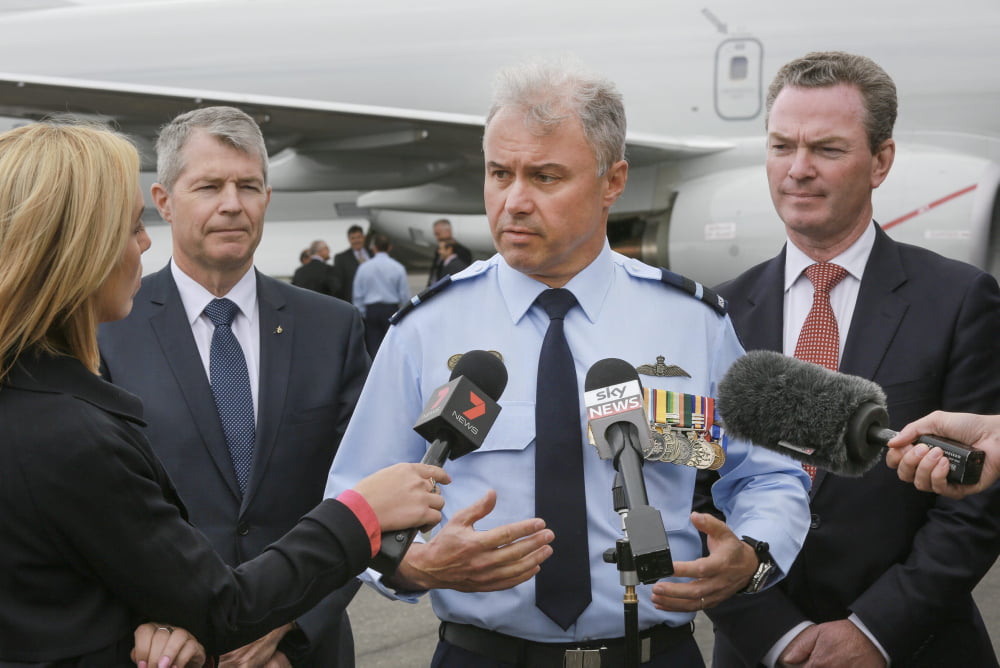
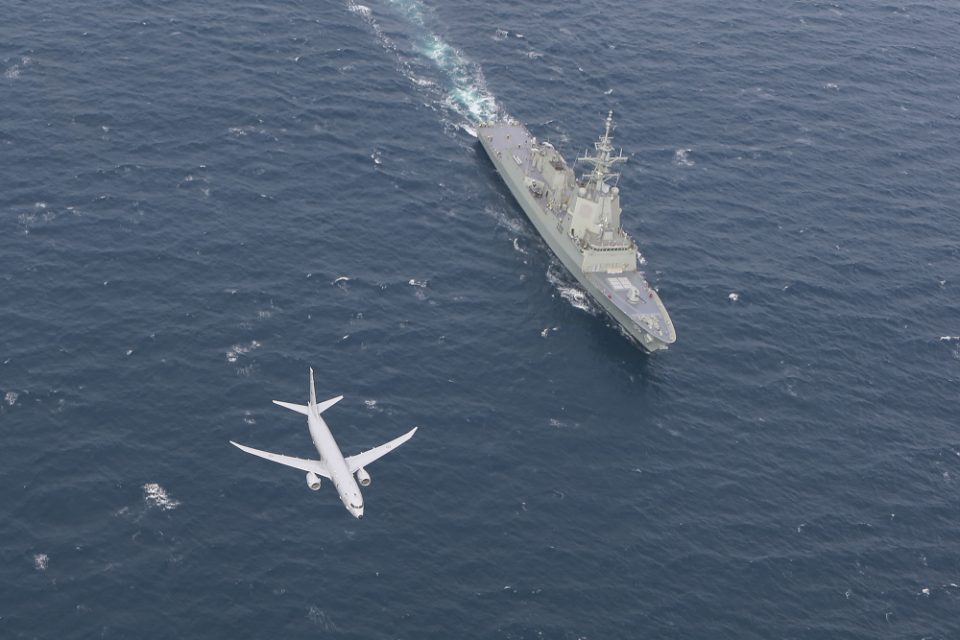
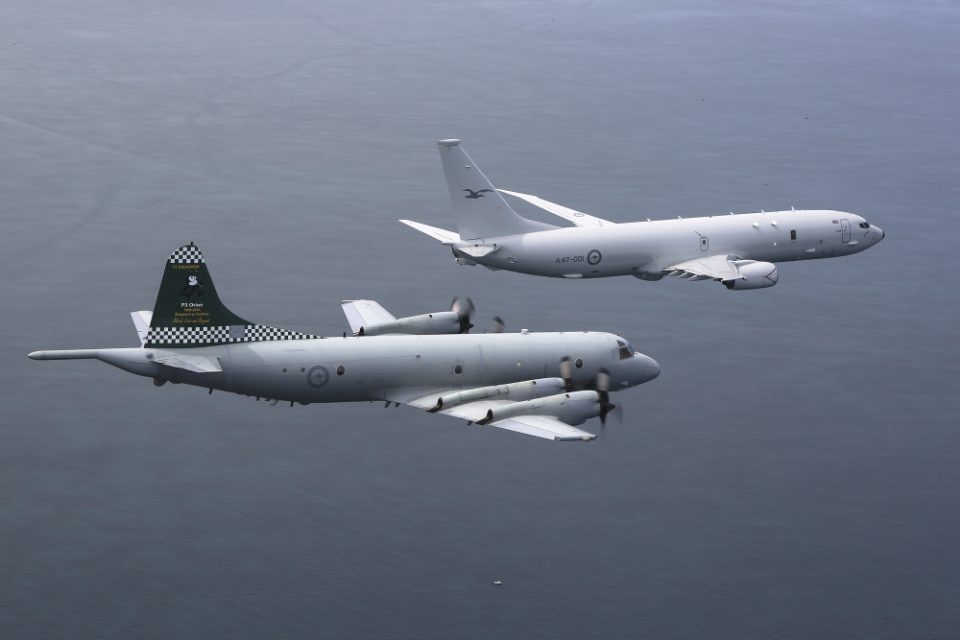
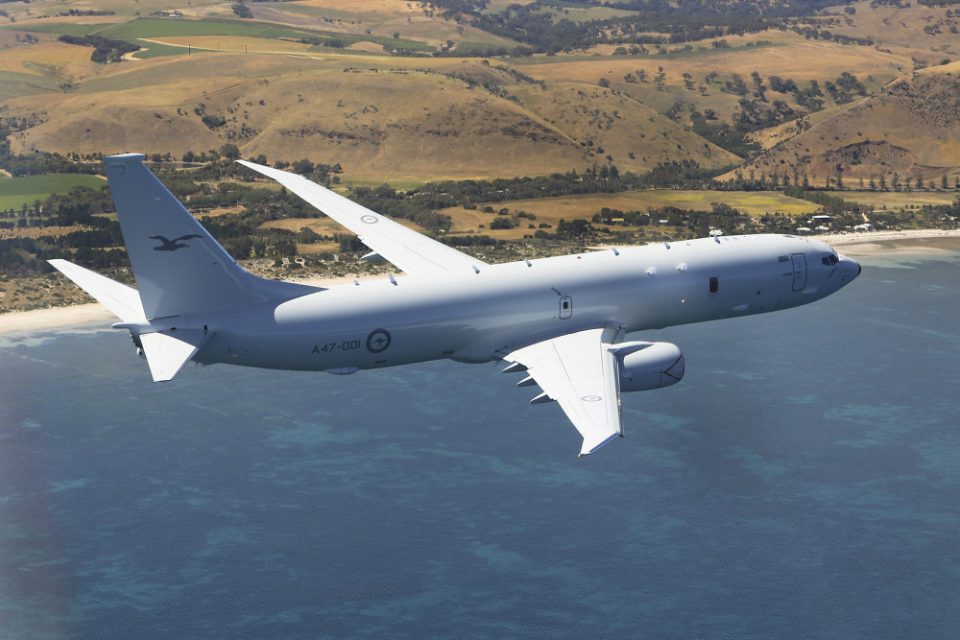
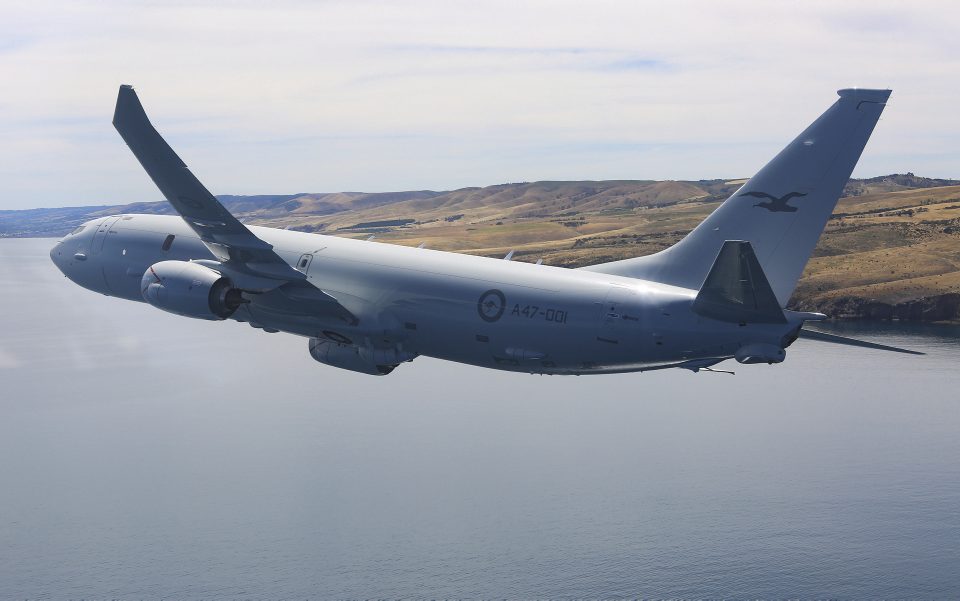
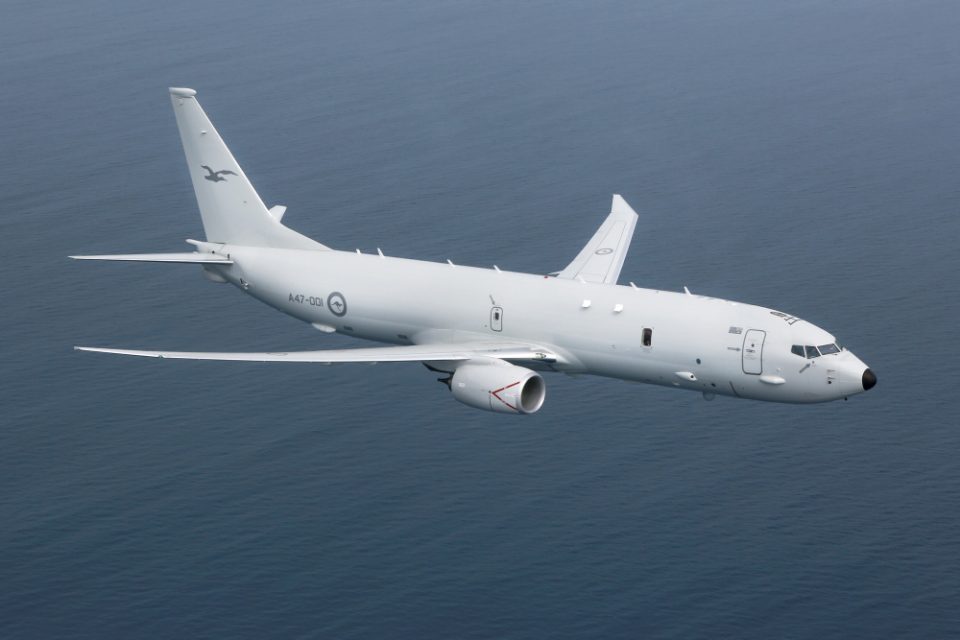
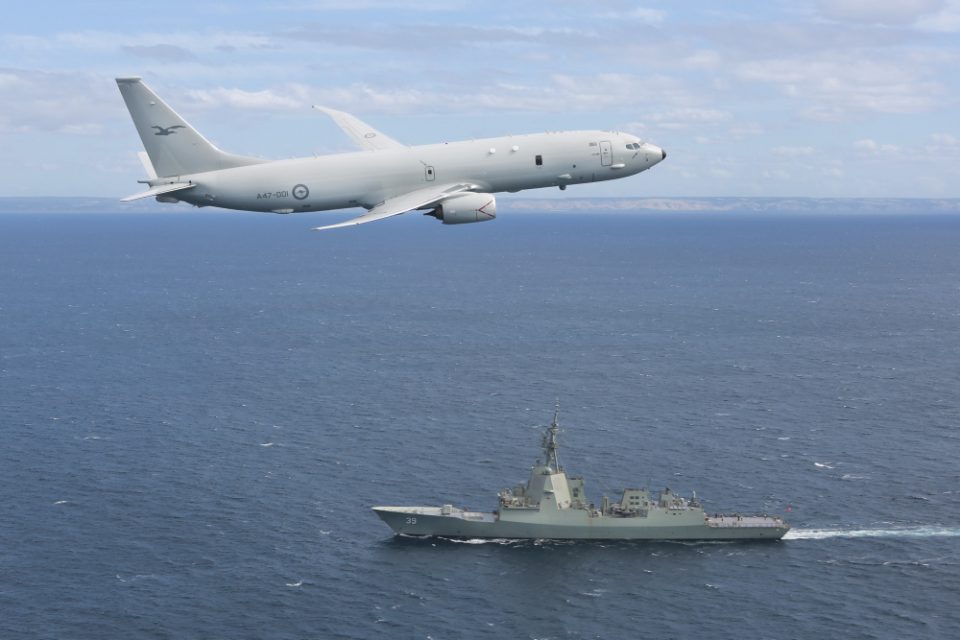
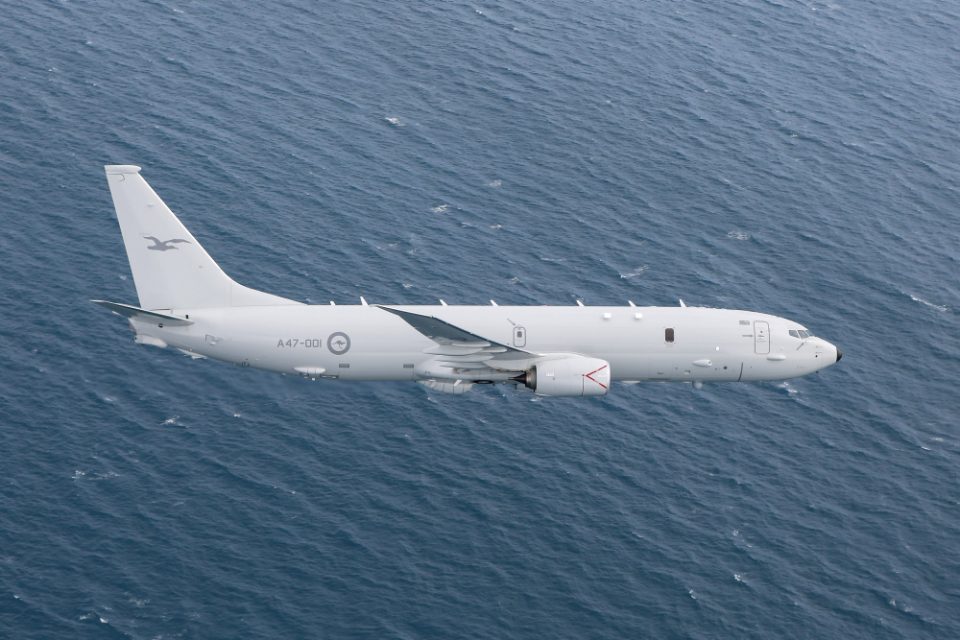
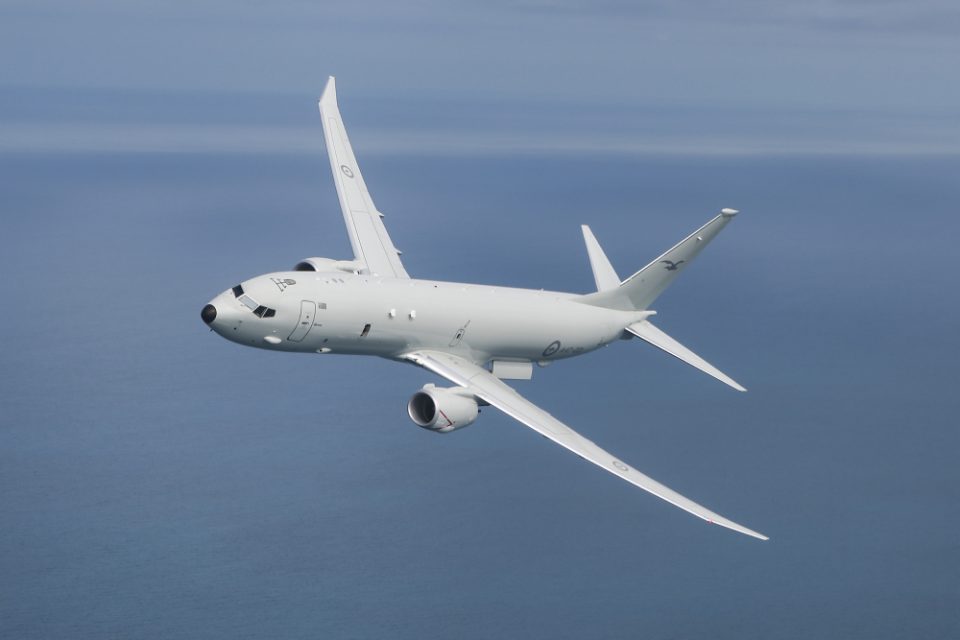
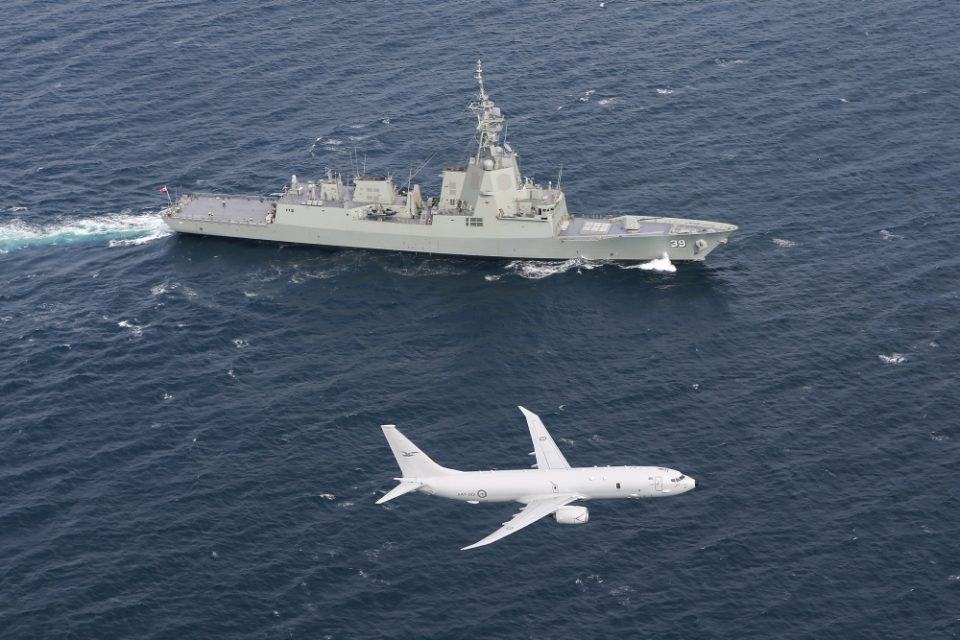
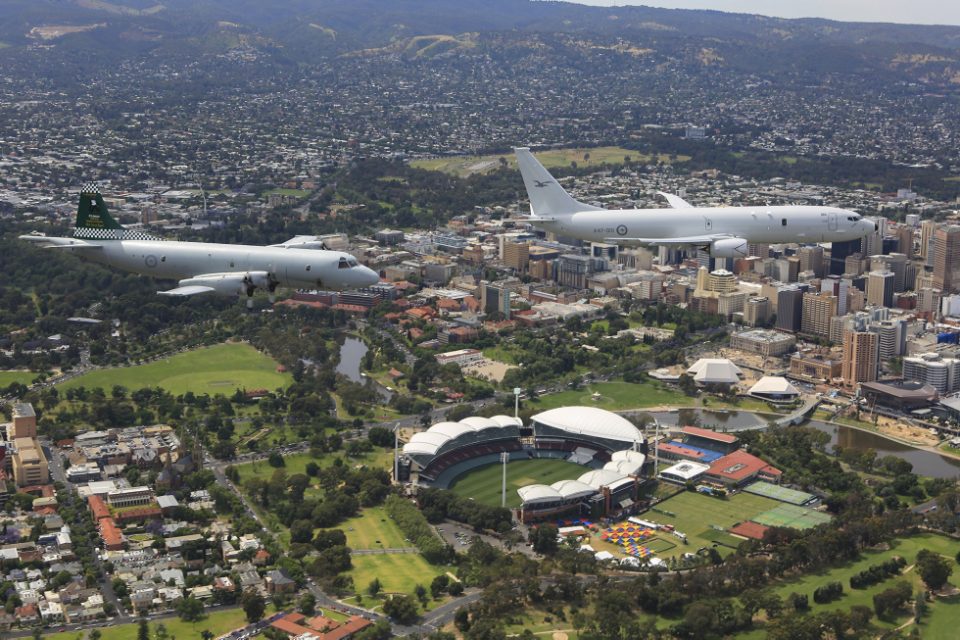
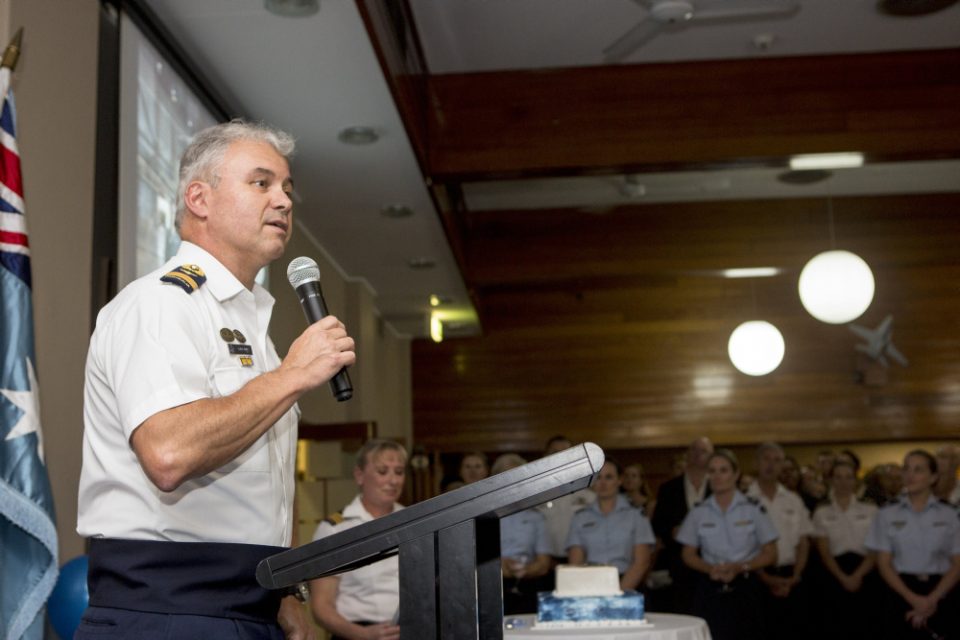
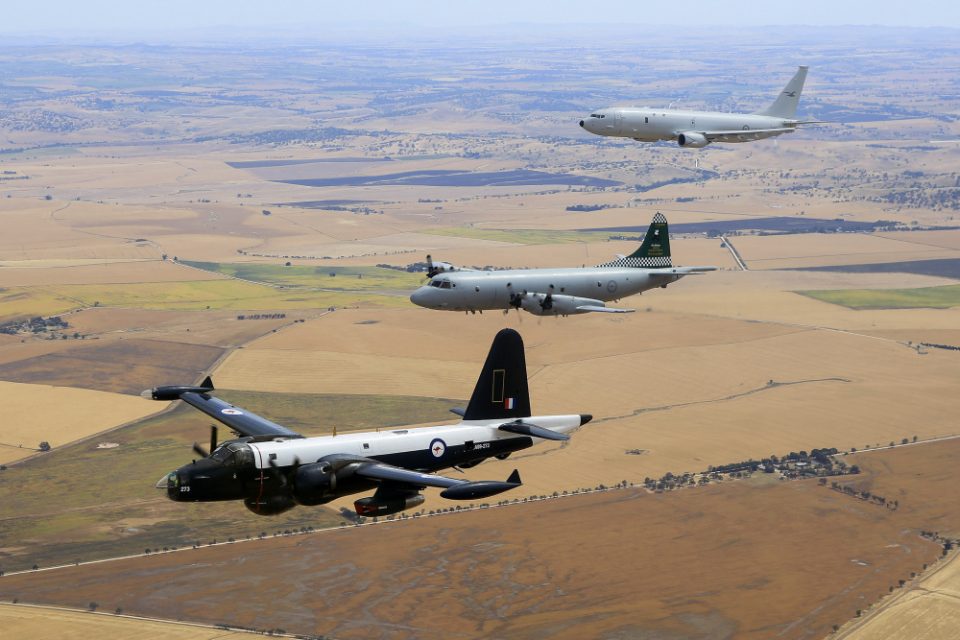

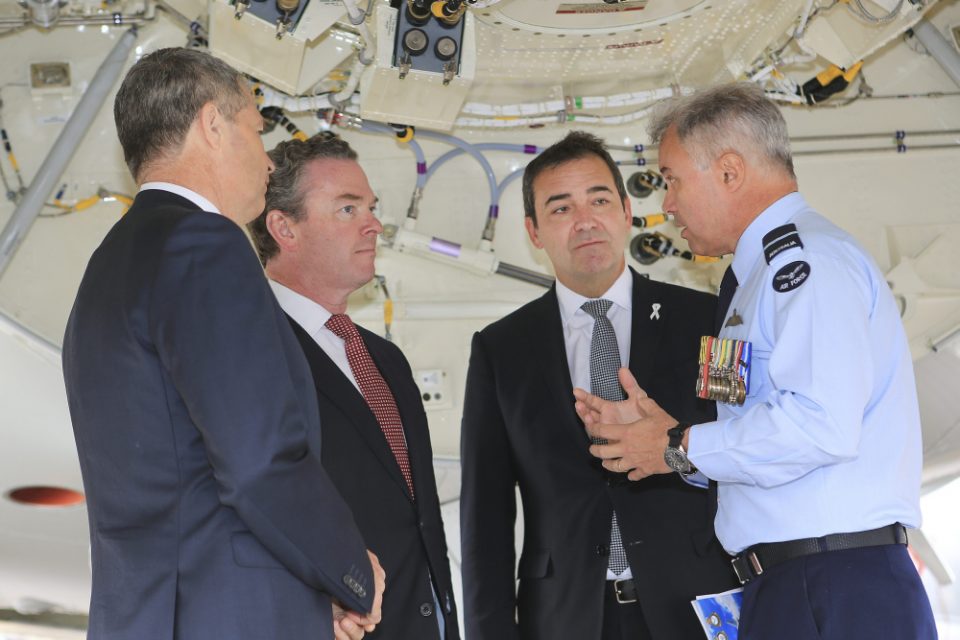
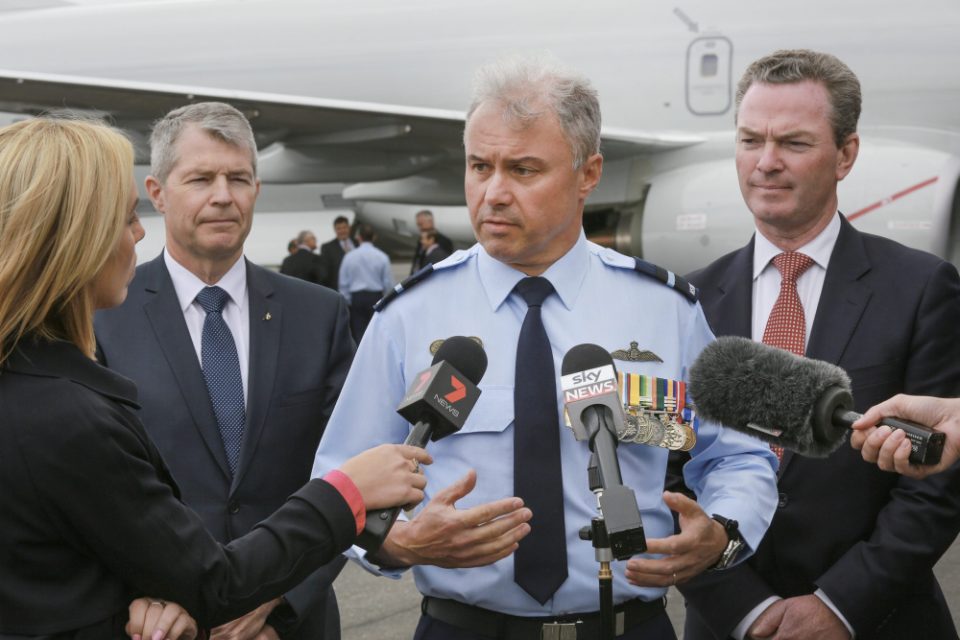
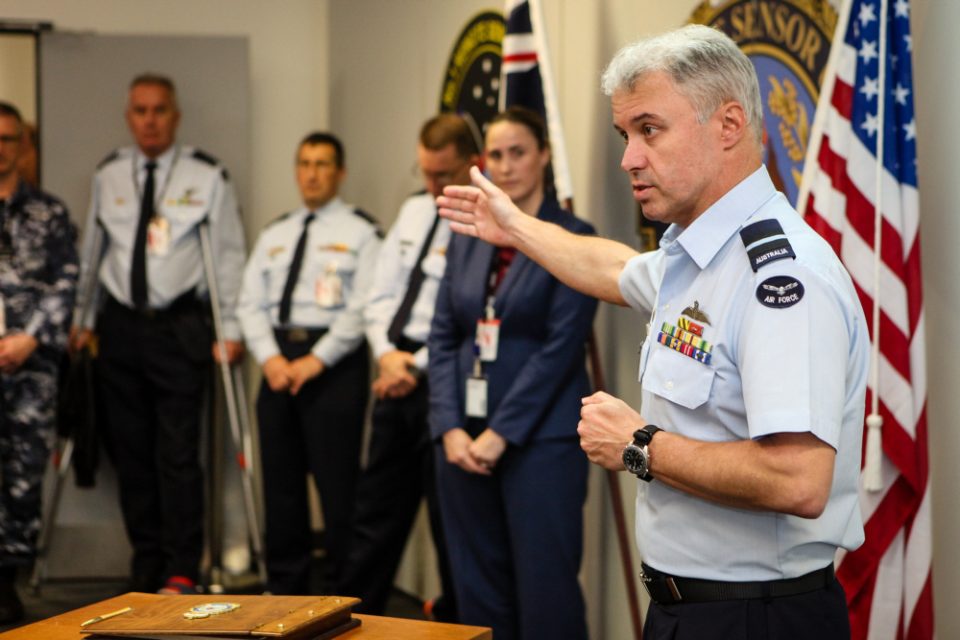


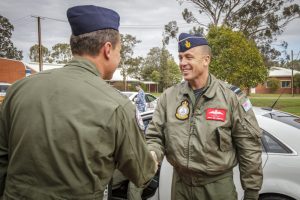 Air Commander Australia, Air Vice-Marshal Steven “Zed” Roberton, DSC, AM is greeted by Officer Commanding No 92 Wing, Group Captain Darren Goldie, AM, CSC during his visit to No 92 Wing. Credit: Australian Department of Defense.
Air Commander Australia, Air Vice-Marshal Steven “Zed” Roberton, DSC, AM is greeted by Officer Commanding No 92 Wing, Group Captain Darren Goldie, AM, CSC during his visit to No 92 Wing. Credit: Australian Department of Defense.

